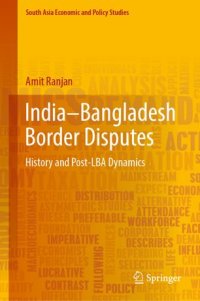
Ebook: India–Bangladesh Border Disputes: History and Post-LBA Dynamics
Author: Amit Ranjan
- Tags: Political Science and International Relations, Comparative Politics, Migration, Conflict Studies, Regionalism, Asian Politics
- Series: South Asia Economic and Policy Studies
- Year: 2018
- Publisher: Springer Singapore
- Edition: 1st ed.
- Language: English
- pdf
This book discusses history of mental construction of the border between India and Bangladesh. It investigates how and when a border was constructed between the people, and discusses how the mental construction preceded the physical construction. It also examines the perils faced by those forced to leave their homes as a result of the partition of India in 1947.
Globally throughout history, the absence of borders made the movement of people from one place to another easier. The construction of borders and sovereign de-limitation of territory restricted or even prevented seamless migration. The situation becomes more complex near borders that were previously open to the movement of people. One such border is between India and Bangladesh, where, in August 1947, suddenly people were told that the places they used to visit on a daily basis were now a part of a different sovereign country.
This book argues that borders construct the identity of an individual or a group. Those who cross to the other side of border, for whatever reason, are identified and categorized by the state and the people. Sometimes these migrants face violence from the locals because they are considered a threat to the local working class. The book also explains how, after the liberation of Bangladesh in 1971, everyday encounter between people from India and Bangladesh have further embedded a feeling of us versus them.In 2015, India and Bangladesh agreed to implement the India–Bangladesh Land Boundary Agreement (LBA). This book assesses whether the implementation of this agreement will have impacts on border-related problems like mobility, migration, and tensions. It is a valuable resource for policymakers, journalists, researchers and students.